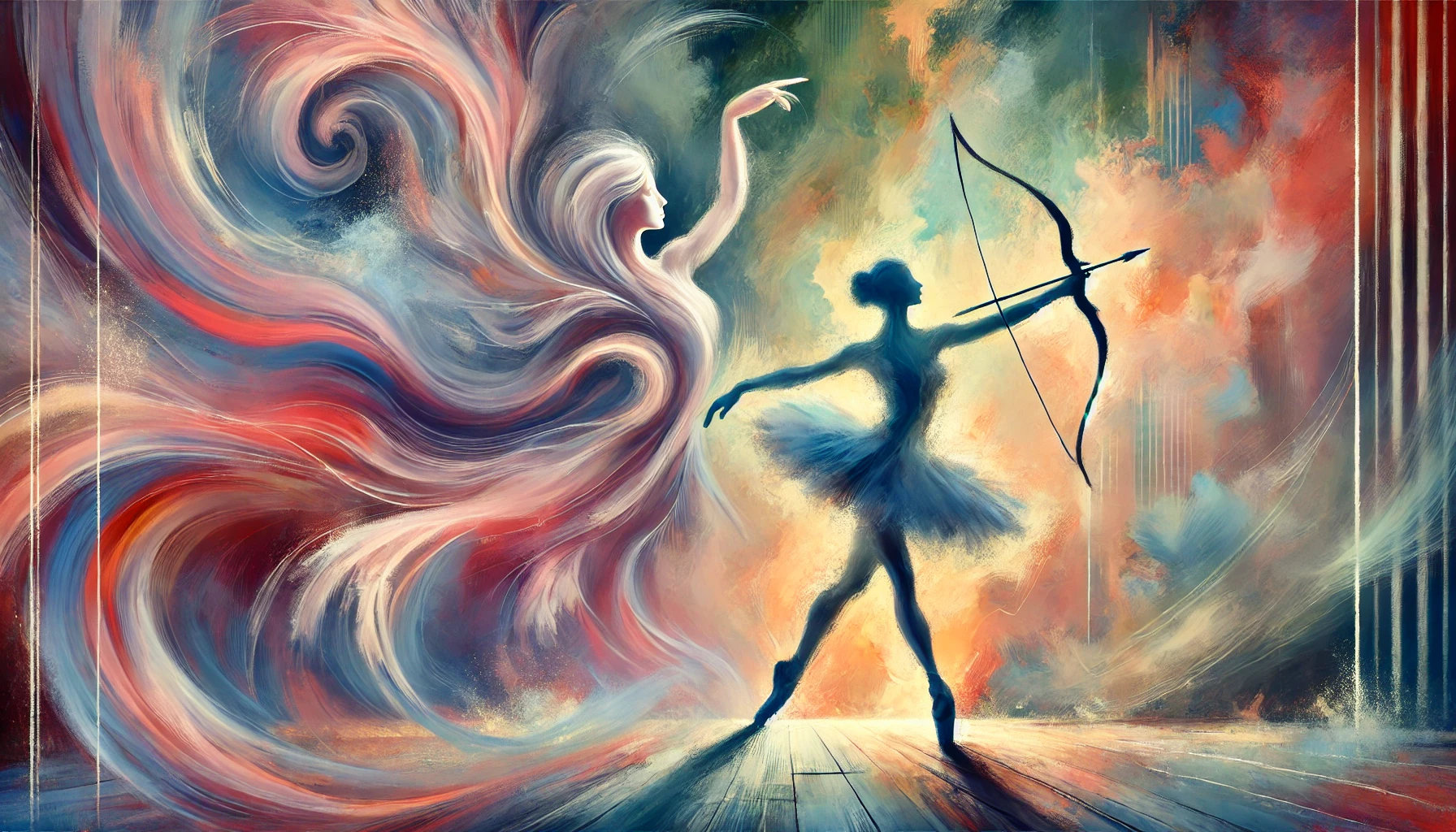At first glance, archery and ballet seem worlds apart. One conjures images of a taut bowstring and the steely gaze of an archer; the other evokes visions of graceful leaps and twirls on a stage. But beneath the surface lies a shared language of discipline, balance, and artistry.
Both pursuits demand not just skill but also an unyielding dedication to form, focus, and the flow of energy. Could an archer learn from a ballerina? Absolutely—and the lessons are as surprising as they are enlightening.
Lesson 1: Mastery of Balance
Ballet is a study in balance. Dancers cultivate an almost superhuman ability to control their centre of gravity, shifting effortlessly between postures. For an archer, balance is equally crucial. A stable stance improves accuracy, while even the slightest misalignment can send an arrow astray. By observing how ballet dancers achieve balance—engaging their core, distributing weight evenly, and maintaining spatial awareness—archers could refine their stances for greater stability under pressure.
Lesson 2: The Elegance of Economy
In ballet, every movement is deliberate and economical. There’s no wasted energy, no extraneous motion. Archery, too, demands this kind of precision. Drawing the bow, anchoring, and releasing the arrow are not just physical actions but a choreographed sequence of micro-movements. A dancer’s emphasis on fluidity and efficiency can inspire archers to refine their technique, minimising strain and maximising consistency.
Lesson 3: The Power of Posture
Good posture is the foundation of both ballet and archery. In ballet, a lifted chest, elongated spine, and open shoulders create a regal silhouette while allowing for maximum movement efficiency. For archers, similar principles apply. A straight back, aligned shoulders, and a steady gaze ensure proper form and reduce the risk of injury. Archers who study the posture principles of ballet could uncover ways to enhance their body mechanics and stamina during long practice sessions or competitions.
Lesson 4: The Flow of Breath
Ballet dancers are trained to control their breathing, using it to enhance movement and sustain long performances. Archers can benefit from this practice as well. The moment before releasing an arrow is as much about mental clarity as physical readiness, and controlled breathing can steady both body and mind. Borrowing techniques like diaphragmatic breathing or rhythmic patterns from dancers may help archers enter “the zone” more effectively.
Lesson 5: Discipline as a Gateway to Freedom
Both ballet and archery require an unrelenting focus on technique and repetition. However, there’s a paradoxical freedom that emerges through discipline. A ballerina’s leaps appear effortless not because they are easy, but because years of practice have made them second nature. Similarly, an archer’s shot becomes instinctive through the mastery of countless repetitions. By understanding this shared principle, archers can embrace the grind of training as the path to ultimate freedom and fluidity in their craft.
Lesson 6: The Aesthetic Connection
While archery is often seen as a sport, its roots are deeply artistic. In many cultures, archery is celebrated not just for its utility but for its elegance. Traditional Japanese Kyūdō, for example, views the drawing of the bow and release of the arrow as a meditative, almost spiritual act. Ballet reminds us that even physical feats can be expressions of art. By adopting this mindset, archers can elevate their practice from mere skill to something closer to performance art.
Conclusion: A Dance of Precision and Grace
Archery and ballet, though seemingly worlds apart, share a common rhythm: the pursuit of balance, focus, and artistry. The archer’s steady hand mirrors the dancer’s poised elegance, and both transform discipline into something transcendent. While the bowstring may never hum on stage, and the pirouette may never take aim, their shared principles remind us that mastery is both a science and an art. In their own ways, both archery and ballet celebrate the timeless beauty of precision meeting creativity, proving that even the most unexpected worlds can find harmony.






0 Comments